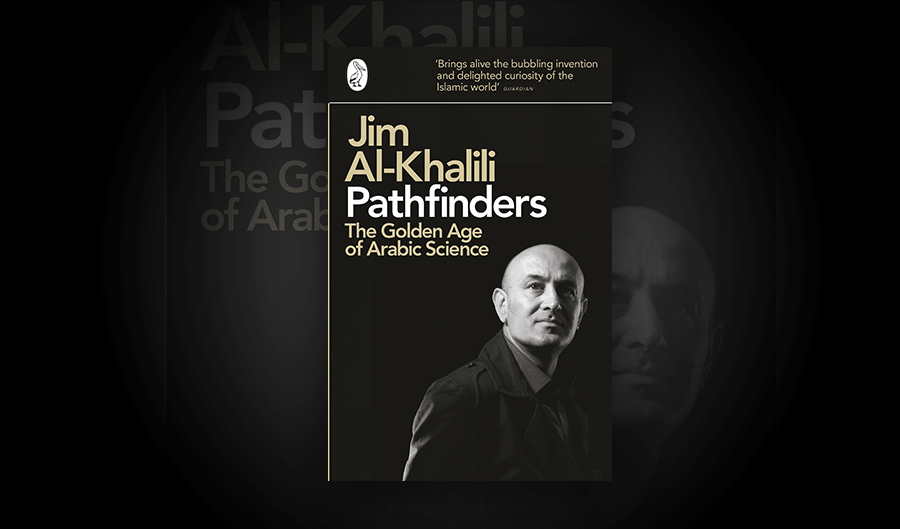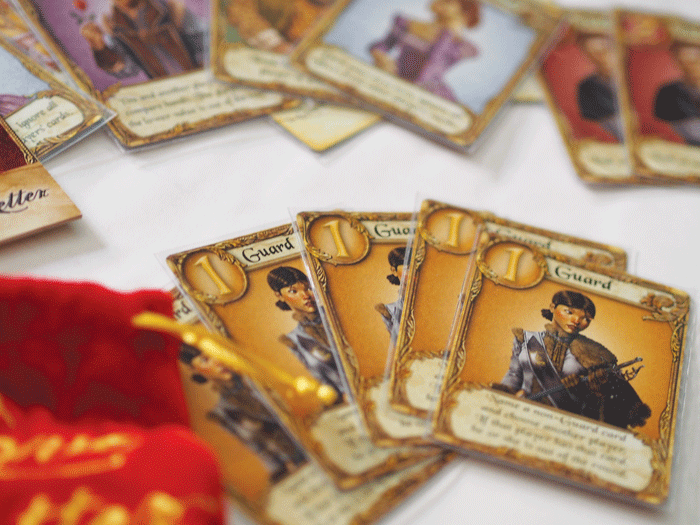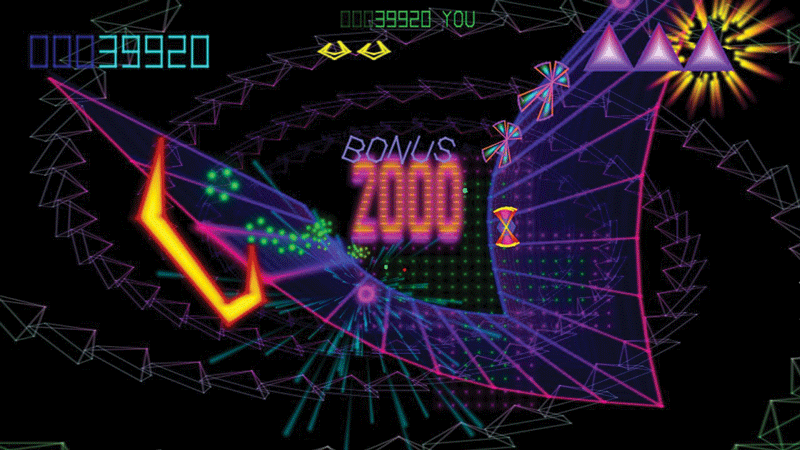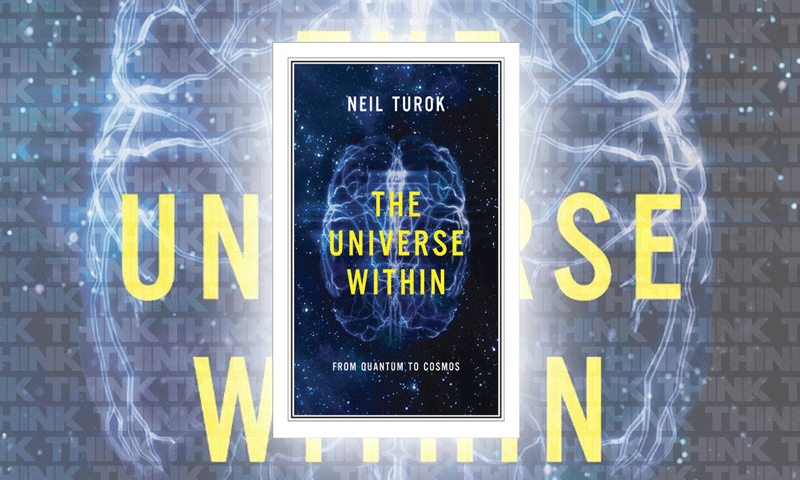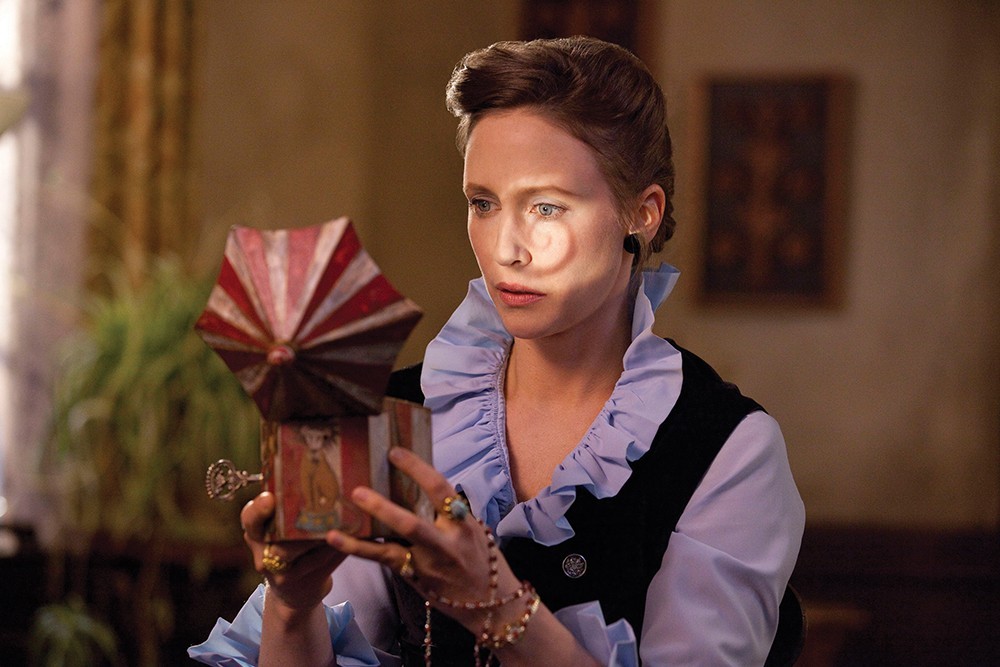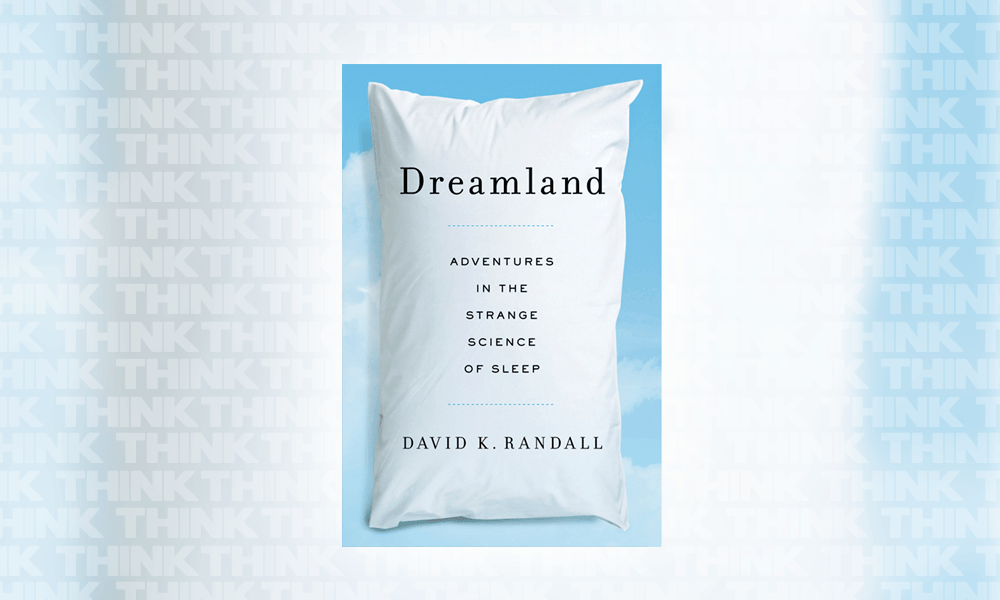Pathfinders: The Golden Age of Arabic Science
This book was published in 2010 but unfortunately remains one of the few examples of positivity towards Islam coming from the West. British Jim Al-Khalili was born in Iran and he wrote about science during the early days of Islam, also giving a beautiful picture of life before the Islamic revolution of 1979 that forced his family to flee. Al-Khalili is a an accomplished theoretical physicist and broadcast presenter for BBC Horizon, The Big Bang, Tomorrow’s World and Science and Islam (the parallel TV series to this book).
If you love history, you will love this book as Al-Khalili goes into great depth—three whole chapters—to explain the circumstances that led to the golden age of science within Islam. The standard history of science texts usually paints the Islamic Empire (the scientific golden age was mostly from the 8th till 13th century) as being the great saviour of Greek texts having translated the works of Pythagoras, Aristotle, and other Greek scientists that then instigated the Renaissance in Europe when they were translated into Latin and other languages. Al-Khalili shows that these scholars were not mere translators but innovative in Mathematics, Astronomy, Medicine, Chemistry, and other fields. Scholars came from all major faiths.
Al-Khalili takes till Chapter Four to start detailing these scientific achievements. I would have preferred if these came sooner. He reveals facts such as that the zero was not invented by the Arabs but by the Indians, the Arabs simply used it to powerful effect. The Arabs pushed mathematics by leaps and bounds and Al-Khalili uses multiple chapters to outline them all. They invented decimal fractions, part-invented the decimal system, and invented proofs of mathematical equations through induction, using pages of equations to break down the initial equation and prove it absolutely, which is still the gold standard for modern mathematicians.
“He reveals facts such as that the zero was not invented by the Arabs but by the Indians, the Arabs simply used it to powerful effect”
He talks about the polymath al-Razi (854 AD–925 AD). Al-Razi lays claim to classifying substances according to their properties based on experimentation. He used experimentation to select the most hygienic site for Baghdad’s hospital, improved medical ethics and even accepted mentally ill patients (when concurrently the Christian world saw them as devil-possessed), distinguished between curable and incurable disease, clinical trials, and many other advances. His medical textbook al-Kitab al-Hawi fills 23 modern volumes, the largest in the Arab world.
Al-Khalili talks about plenty of other advances and scholars that are sure to surprise readers. The book can be slightly challenging for people to get through. Al-Khalili writes beautifully, clearly, but somewhat academically. If you’re interested in learning about a neglected part of the history of science, this book is for you.
I spoke to Al-Khalili back in 2010 about the TV series related to this book. His final words were that I had to bring his series to Malta. Words relevant then as they are now: a shining light on the possible positivity within Islam interpreted in the right way.
Love Letter
The Microgame is a buzzword that has exploded over the last year in the board game community. Microgames are video game mini-games but analog and a lot more awesome. Love Letter is the microgame that popularised the format—Kanai’s 16-card wonder.
Love Letter was not the first microgame, it wasn’t even Kanai’s first microgame. R, another game of his was a popular title which you could buy by emailing the designer. He would then mail you an envelope with the cards in it, which was the board game itself. Love Letter is a spiritual successor to ‘R’, and the first of his works to have an international distribution.
In Love Letter you are trying to deliver the proverbial letter to the princess. You do this by gaining the favour of her closest friends. The deck is made up of these people, all having a number. The person who holds the card with the highest number at the end of the round, or the last person standing, wins.
In the game you always keep one card in your hand, and at each turn you draw a card and choose one of the two to discard. Each card though, has a specific ability, which activates as soon as you discard it. For example, if you play a Guard, you have the opportunity to try to guess another player’s card. If you do, that player is out. The Countess for example, cannot be caught with the Prince or the King (you must discard her if she does). This would mean fornication. The Priest can see another player’s card, since this constitutes confession, and the Baron can kick out anyone of a lesser number than him due to politics.
The game takes a little bit of getting used to. It is quite different from other mainstream games but I have not had so much fun with cards since I first found money in birthday cards.
With almost infinite replayability, a price point of around €9, extreme portability, and tight, nail biting moments, Love Letter is a definite buy. There is very little chance of going wrong. Five Stars.

Which tablet?
A few weeks ago a good friend of mine made the mistake to ask, ‘Which tablet should I buy?’ After two hours and a long rant, I think he regretted asking that question.
The reason? Until a few years ago buying a tablet was easy, few products really competed with the iPad. Now, however, the choice is much more difficult.
The tablet market is very varied with products ranging in price from a few hundred euro to €1000. So are the more expensive tablets always better?
The answer has to be a resounding ‘no’. And the choice is not limited to budget. You would also need to consider size, both physical and memory-wise, OS (Operating System), and manufacturer.
The right choice mostly depends on the intended use. As an e-book reader alternative, a light and portable 7 to 8 inch tablet seems ideal. Here Google’s Nexus 7 proves an excellent budget choice, with the iPad Mini a more expensive but stylish alternative.
Size does matter. If you intend to use your tablet to browse the internet or watch movies a 10 inch tablet is your best choice. Here the iPad Air still provides a powerful tablet with an excellent display in a lightweight package. Equally strong and stylish are the offering from other manufacturers such as the leather cladded Samsung Galaxy Note and the waterproof Sony Xperia Z2.
If you wish to replace your laptop with a tablet, now you can. Windows based tablets as the Microsoft Surface Pro 2 add a clever keyboard and a full Windows 8.1 experience to provide a real alternative to a laptop. Hybrids such as the Asus Transformer, a netbook with a detachable screen, and the Lenovo Yoga show that functionality does not need to be sacrificed when opting for a tablet.
I could go on, and on and on…
TxK

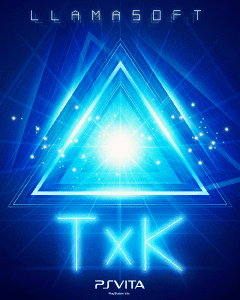 TxK marks the return of seminal designer Jeff Minter whose career spans over 30 years. The recurring themes in Minter’s works are frenetic action and psychedelic experiences. All these abound in TxK — a new arcade shooter for PS Vita.
TxK marks the return of seminal designer Jeff Minter whose career spans over 30 years. The recurring themes in Minter’s works are frenetic action and psychedelic experiences. All these abound in TxK — a new arcade shooter for PS Vita.
The game starts off with the player in a wireframe setting being attacked by what looks like an army of angry ribbons. Soon you will discover that you are actually an oddly shaped spider(ish) creature that is crawling at extremely high velocity. Once your attacking abilities have been mastered, the environment will constantly reshape around you. Before you know it, you will find yourself up-side down fighting enemies from every direction.
It is an exercise in minimalism; so much is achieved with few details. It is up to the player to make sense of the bizarre juxtapositions of graphics and sounds. Thanks to its unique style, TxK shines.
This article forms part of The Gaming Issue
The Universe Within

Would you like to learn about how the cosmos works? Why it relates to our society? In short, how quantum physics can change your life? Then read The Universe Within by Neil Turok.
The laws of mathematics and physics rule our Universe. Neil Turok does not shy away from showing a few equations then devoting pages to what they mean, so you might need to come equipped with some basic mathematical skills.
The Universe Within is yet another astrophysics/quantum physics book talking about our amazing and wonderful Universe. It uses the typical formula of talking about the usual heavyweights like Einstein and Newton amongst others. However, Turok surprises by talking about oft glossed over scientists namely from the Scottish Enlightenment. At the turn of the 18th century, Scotland proved the unlikely source of leading intellectuals such as Adam Smith (who invented capitalism), David Hume (revolutionised philosophical thought), and James Watt (invented the steam engine). Turok also focuses on the achievements of Michael Faraday and James Clerk Maxwell (responsible for finding out the relation between electricity and magnetism, which drives devices from electrical generators to wireless chargers).
Turok loves science. This drive leads to some great moments in the book. He has one of the most beautiful descriptions of the Big Bang, space-time, and Einstein’s E=mc2 — you might finally understand them all. He has a nice style if uneven. At times, he falters by being too academic and using overly complicated analogies.
The scientific idea behind the whole book is his explanation to take the Universe into the quantum domain. He sees the Universe as having existed before the Big Bang and that it will exist past the following Big Bang. ‘There was no beginning of time nor will there be an end: the Universe is eternal.’
“He sees the Universe as having existed before the Big Bang and that it will exist past the following Big Bang”
Through this book Neil comes across as an enlightened man. One of his predictions sees the next Einstein arise from Africa. This continent is full of untapped potential and has enough problems to fill all the issues of THINK a few times over. To solve them you need scientists and skilled people. With this in mind he helped set up the African Institute for Mathematical Sciences — a true visionary, who had to flee South Africa due to his parents’ role in trying to bring down British apartheid.
Turok also knows his philosophy. In the beginning, he links Einstein’s thoughts to Hume. Towards the end of the book more philosophical questions arise. This is one of my favourite parts of the book, till he strangely asks: might we be the means for the Universe to gain a consciousness for itself? He also sees quantum physics as a role model for society, and manages to sneak in how quantum computers will evolve with humans making some form of hybrid species.
The author has a good heart. His ideas about the skills today’s children need, how scientists are human, and the meaning of life are beautiful. He also hits the nail on the head when writing, ‘politicians tend to think no further than the next election, scientists no further than the next grant’. This book is worth a read, and if you don’t understand it you’ll definitely look clever having it on your coffee table.
The Conjuring — Film Review

Krista: James Wan’s film is irresponsible for its appalling suggestion that the Salem witch hunt was somehow a justifiable massacre. The dead earnestness of those who ‘inspired’ it makes me shudder. The ‘true story’ malarkey is common in horror taglines but this movie seems more earnest about those credentials by basing its characters on real people.
Noel: You’ve got a point there. Even though the story revolves around female characters, most of them are either ghosts or victims. The true menace is motherhood itself. Even Annabelle the doll exploits maternal instinct to haunt its hosts. The ghost of the witch, despite being after the children, first possesses the mother then tries to make her kill the child.
K: Are you suggesting that the film distorts the maternal instinct?
N: Yes, as far as the witch’s ghost is concerned. That is why it tries to corrupt the other mothers. The males simply orbit.
K: That’s another thing: how seriously does it take itself? There’s the playfulness one associates with a Wan film, especially references to other horror movies, such as The Evil Dead (‘groovy’). Wan is a horro fan who indulges in it for its own sake.
N: I found The Conjuring very dark in tone, compared to Insidious, his previous ghost film. The geeky paranormal researchers play a less central role.
K: How does the motherhood bond in The Conjuring compare to the fatherhood bond in Insidious?
N: The fatherhood bond is tenuous there. The mother is most worried about their haunted son.
K: You are right about the mother being the emotional centre and her level of concern in Insidious. However, the problem originates from the father, who passes on the legacy of astral projection. And it’s the father who rescues the son. I thought the mother-son relationship was more peripheral. She tries to influence events but isn’t a moving force.
N: Off on a tangent: James Wan is such a good filmmaker. He’s confident and knows exactly what he wants to get across without resorting to boo! gimmickry. The scariest bits in the film happen with a static camera and no cuts. Just mise-en-scène — a visually artful way of telling a story. For example, the bedroom scene with the two sisters. One of them points at a ghost that is never seen. Since we’re watching a horror film, we know it’s there. And Wan sustains the scene long enough to get under our skin. Brilliant!
K: That’s true. Though in terms of unexpected shifts, these do occur often. Take that ‘odd’ devil scene in Insidious where it feels like a different horror subgenre. There are these shifts in tone and style in The Conjuring too, but it is more consistent than Insidious overall.
N: Insidious is simply superb up until the ‘ghostbusters’ appear; then it becomes goofy.
K: Though I’d take any Lin Shaye character over the Warrens.
N: I am with you on Wan’s playful approach. Honestly, I’d love to see a ‘mature’ James Wan film through and through. Given the right script, he would make a great film. Krista, could we say that The Conjuring is a second take at Insidious?
K: I agree with what you said when we came out of the cinema — that it refers back to his earlier film. Though I still prefer Insidious, because of those jarring shifts from subtle to unsubtle, which are tricky to pull off, but
somehow work. The Conjuring is certainly more polished, but I cannot quite see it as more ‘mature’ than Insidious, mainly because of its political irresponsibility.
Surely You’re Joking, Mr. Feynman!

Richard Feynman is my new idol. He’s hallucinated, he’s chatted up call girls, and he’s won a Nobel Prize. Realistically, I’ll probably only manage one of those achievements.
Surely you’re joking Mr Feynman!: Adventures of a Curious Character is as amazing a book as was Dick himself. He died of cancer in 1989, three years after the book was published.
The book is a great read and insight into his mind. It is compiled from a series of taped conversation that Feynman had with drumming partner Ralph Leighton. It haphazardly goes through his life from young radio mechanic to Professor at Caltech where he achieved most of his discoveries.
Throughout the book he randomly switches from girls, mathematics, academic life, to his adventures. This nicely sums up his life.
Take Brazil. He travelled there from Caltech during a sabbatical. There he learnt to play Samba music choosing the frigiderisa — a metal stick banged on a toy metal frying pan. ‘I practiced all the time. I’d walk along the beach […] practicing, practicing, practicing. I kept working on it, but I always felt inferior.‘ Insecurity that culminated in him walking down Brazil’s main streets, cars diverted, while his samba band made the streets dance.
“Once Feynman overcame his social awkwardness, he became a famous womaniser”
Feynman didn’t hold back his punches; if he didn’t agree with something he said it. He heavily criticised the Brazilian education system. ‘I tried to show them (students) how to solve problems by trial and error. […] I could never get them to ask […] questions.’ When surrounded by Brazil’s big shots, he said: ‘no science is being taught in Brazil. […] It’s amazing you don’t find many physicists in Brazil. Why is that?’ Magically, government listened.
Once Feynman overcame his social awkwardness, he became a famous womaniser. Girls crop up throughout most of the book. And he’s good. They would even buy him champagne and sandwiches. As most things in his life, he did it for fun and loved the game.
He writes a lot more about experiences with other women than with his three wives. His first wife’s death touched him deeply, however. ‘I didn’t cry until a couple of months later […] walking past a department store with dresses in the window.’ His other wives aren’t mentioned much.
Feynman also dabbled in drugs. He took ketamine, smoked marijuana, and might have taken LSD — denied in this book but suggested elsewhere.
He also had a short art career and managed to sell his paintings, though he lost his drive to paint by having a solo exhibition too early in his art career.
Another highlight of the book is Feynman’s colourful descriptions of the Manhattan Project that made the first atomic bomb, including how he lock-picked the project’s secrets. He also mentions his great discoveries but is incredibly humble and dismissive about his Nobel Prize — too much hassle. He beautifully describes how he came to his findings and his nervousness when meeting Einstein and Pauli.
Feynman’s genius and eccentricity is clear throughout the book. It will have you in fits. He went on all fours to sniff the world to see how much better dogs can sniff than us — apparently, not much. Life was his game, and boy did he play well.
Dreamland

David K. Randall woke up on his back, his leg bent at an awkward angle, in excruciating pain. To figure out why, he wrote a book about the science of sleep. Clever. Clever doubles as a nice summary of the book.
Another book summary: sleep rules your life. Get a good night’s sleep or else everything suffers: your creativity, memory, attitude, ability to think straight, control your emotions, react to emergencies, sex life, and work. Lack of sleep has cost lives; to sleep is to live.
An extreme statement but Randall holds a very good argument. Zlatko Glusica, an Air India pilot, woke up just before landing and tried to bring a plane down safely with a sluggish brain whose higher brain functions were down. In this state we might talk to lamps, Glusica instead killed himself and 157 others. Lack of sleep and truck drivers are another bad idea, while battles have been lost because of sleep. Sleep prevents disasters.
“Randall covers an immense range of research and topics. This is where the book’s problems start. He did a lot of research and wants us to know that.”
The book is well researched. Randall fires factoid after research study at the reader in a pleasant easy to read style. You’ll learn about the dangers of the first sleeping pill that is now a 30 billion dollar industry, how one in five sleepwalk, and how one in four middle aged men have sleep apnea.
Sleep apnea happens when the airway collapses in either obese people or those with a narrowed throat. A minute can pass before the sufferer briefly wakes up and desperately gulps down some oxygen. Most apnea patients are unaware of their condition. It leads to disrupted sleep and less productivity, memory loss, and heart attacks. Sufferers can use a simple device that gently pushes air into the lungs as an instant cure.
The book is filled with great advice like the above. It’s simple, without hocus pocus, and doesn’t need overly expensive equipment. Relax. Don’t try to sleep too hard. Your brain must disassociate itself from the rest of your body. Don’t drink alcohol or coffee. Expose yourself to light, but not late at night, at night dim lights, avoid screens. Don’t sleep too hot or too cold, the body is meant to cool after 10 pm — let it. Exercise. Simple.
Randall covers an immense range of research and topics. This is where the book’s problems start. He did a lot of research and wants us to know that. At other times, he rambles. A stricter editor would have helped the book.
The author only glosses over hardcore scientific studies. He mentions some science behind daily rhythms in Chapter 9. The book only has 13 chapters. He hardly even mentions the genes or molecular biology related to sleep. The scientist inside me died a little death. There are some amazing stories he missed out on by focusing on the lighter human studies.
Don’t take the above too harshly. Dreamland is a great book to learn more about sleep, just avoid late night tablet reading. You have been warned.




